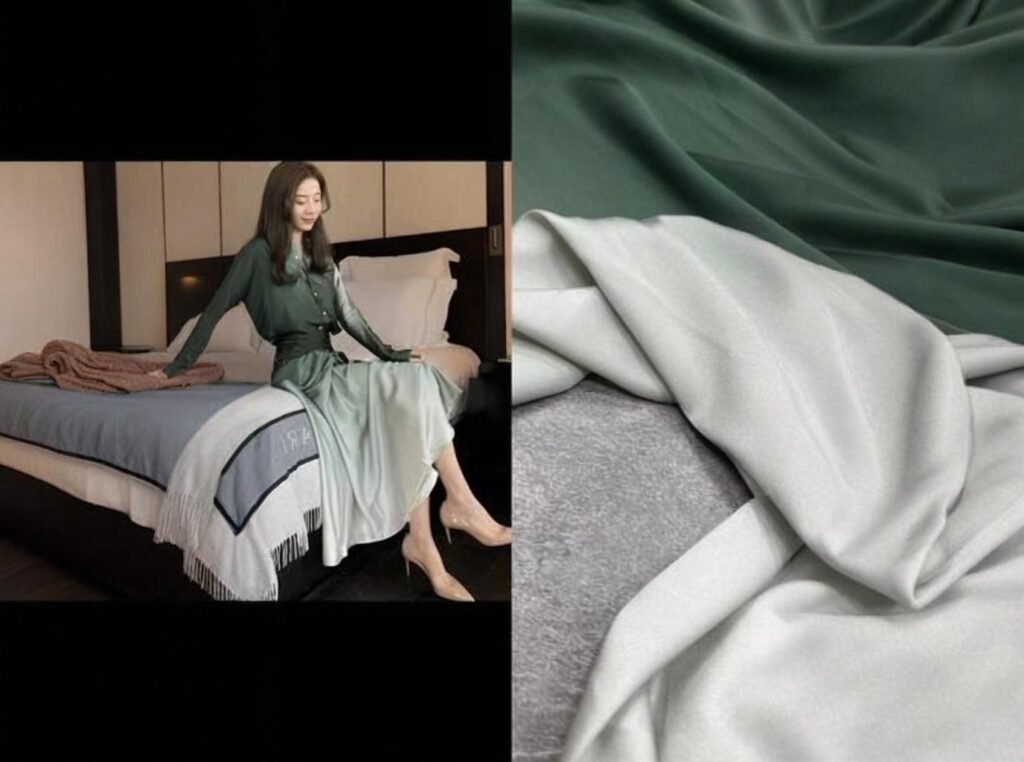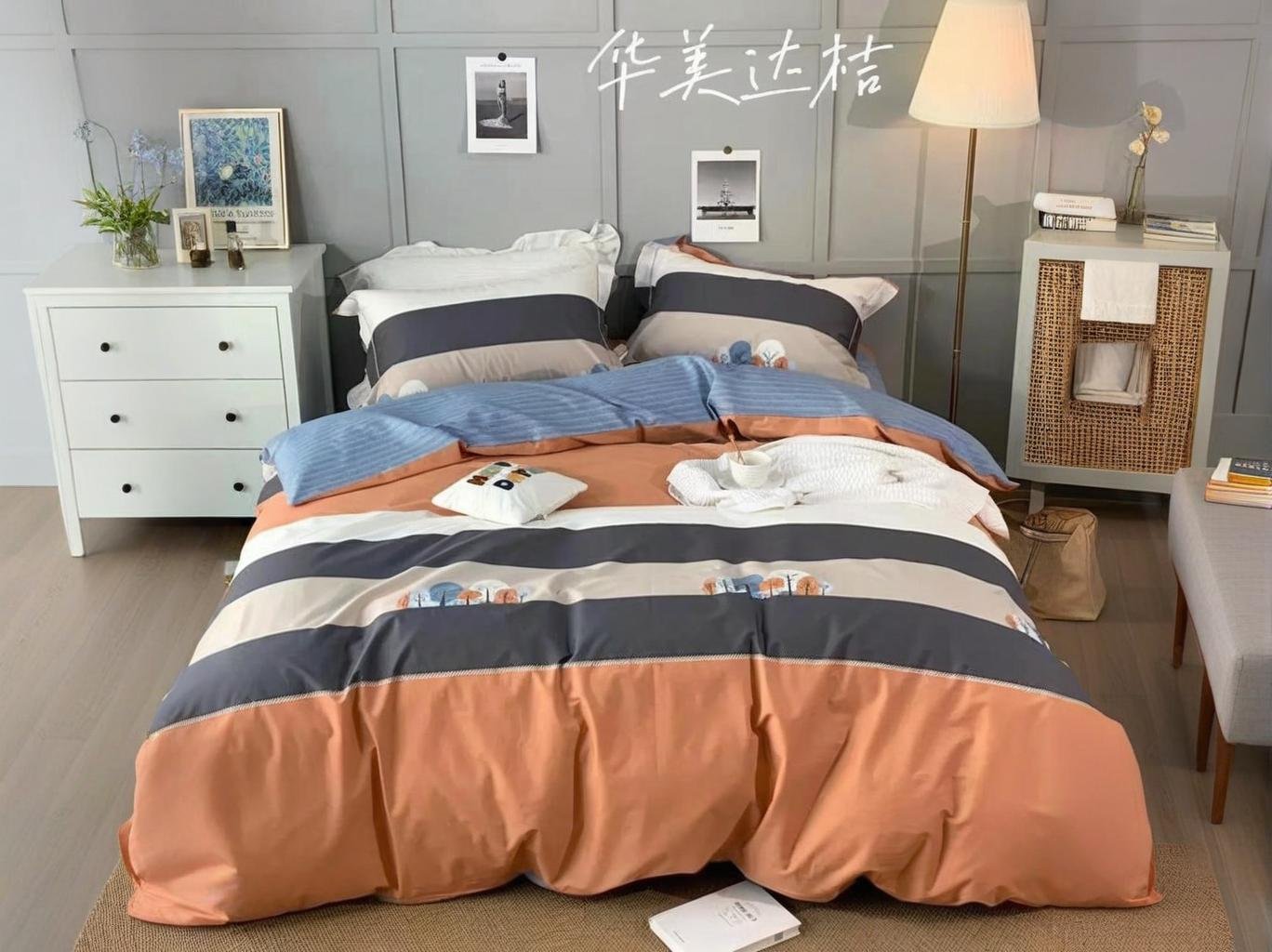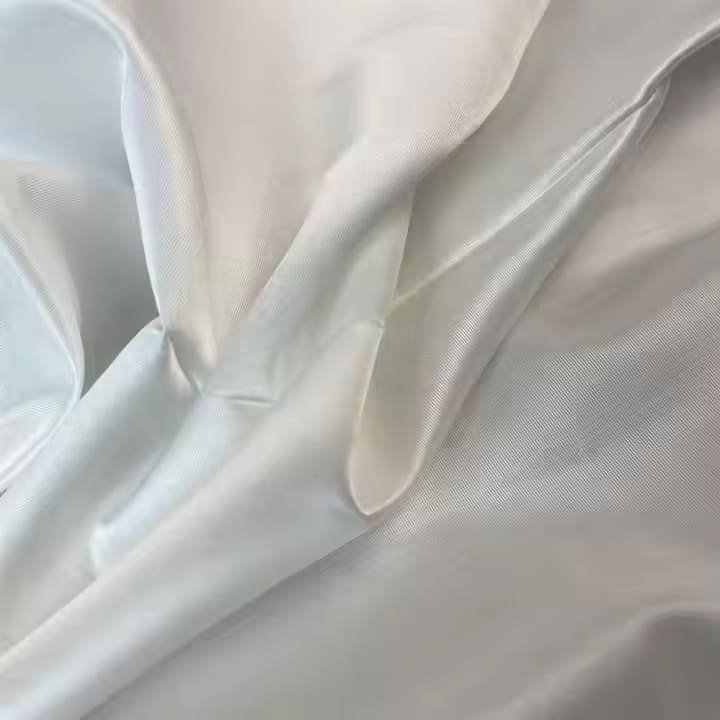Which Country Has The Best Quality Silk?

Silk has been called the “queen of fabrics” for centuries—but in a global market where silk is produced across Asia and Europe, a common question arises: which country actually produces the best silk? Is it the historical powerhouse of China, the spiritual craftsmanship of India, or the precision weaving of Italy?
The country most recognized for the best quality silk is China, particularly for high-grade 6A mulberry silk. However, Japan is known for artisanal finishing, Italy for premium weaving techniques, and India for diverse silk varieties with strong cultural significance. Ultimately, the “best” silk depends on the grade, processing method, origin traceability, and final application.
That said, the story of silk isn’t as straightforward as just choosing “Made in China” or “Made in Italy.” In one example, a European fashion brand sourced raw silk from China but sent it to Como, Italy for finishing. The result? A product that cost three times more—and carried a “Made in Italy” label. In today’s textile world, understanding where silk truly comes from and how it’s produced is the key to sourcing excellence.
1. What Are the Main Countries Known for Producing High-Quality Silk?
Globally, the top silk-producing countries include China, India, Uzbekistan, Thailand, Vietnam, Japan, and Italy. Each country specializes in unique silk types and finishing methods.
Global Silk Leaders and Their Strengths
Top Silk-Producing Countries by Volume
| Rank | Country | Silk Type Specialization | Annual Production (Metric Tons) |
|---|---|---|---|
| 1 | China | Mulberry (Grade 6A), Tussar | ~140,000 |
| 2 | India | Mulberry, Eri, Tussar, Muga | ~30,000 |
| 3 | Uzbekistan | Mulberry | ~1,200 |
| 4 | Vietnam | Mulberry (mainly raw exports) | ~650 |
| 5 | Thailand | Handwoven, matmee, organic silk | ~600 |
| 6 | Japan | Fine silk yarn, finishing | ~200 |
| 7 | Italy | No raw production, high-end weaving | N/A |
Country Highlights
- China: Largest exporter of mulberry silk; dominant in 6A grade raw silk and bulk supply.
- India: Most diverse range of silk types; known for cultural heritage and handloom silk.
- Uzbekistan: High-quality reeled silk with historical Silk Road lineage.
- Thailand: Handwoven matmee silk and organic variants favored in the craft sector.
- Japan: Renowned for finishing techniques, dyeing precision, and refined yarns.
- Italy: Best known for luxury silk processing (Como region), used in haute couture.
Notes on Trade:
- China supplies over 60% of the world’s raw silk exports.
- India consumes most of its silk domestically, with exports focused on Tussar and Eri.
- Italy imports raw silk (mostly from China) and transforms it into high-end designer fabric.
China leads in scale and grade, India in variety, and Italy and Japan in refinement. Each brings something irreplaceable to the silk ecosystem.
2. Which Country Produces the Finest Grade Mulberry Silk?
The finest grade mulberry silk—classified as Grade 6A, 22–30 momme—is primarily produced in China, particularly in provinces like Jiangsu, Zhejiang, and Sichuan. These regions offer ideal climates for Bombyx mori silkworms, controlled feeding, and modernized reeling infrastructure.
Silk Grading and Geographic Correlation
What Is Grade 6A Mulberry Silk?
- 6A is the highest silk grade, based on fiber length, uniformity, strength, and luster.
- It features continuous filament yarns, resulting in smooth, glossy fabric with minimal slubs or defects.
- Typically used in luxury bedding, bridalwear, couture accessories.
Countries That Offer 6A Mulberry Silk
| Country | Availability of 6A Grade | Infrastructure for Consistency | Remarks |
|---|---|---|---|
| China | ✅ Widely available | Modern reeling machines, QC | Industry leader in 6A silk supply |
| Vietnam | ❌ Limited to raw yarns | Export-focused production | Quality varies by lot |
| India | ⚠️ Rare for mulberry | Mostly hand-reeled | Used more for textured silk types |
| Japan | ✅ For niche finishing | Premium but low output | High price, ultra-refined weave |
| Italy | ❌ Imports only | Excellent post-processing | No native silk farms |
Certification Availability
- OEKO-TEX Standard 100: Widely offered by Chinese suppliers.
- GOTS: Emerging in India and Vietnam for organic silk.
- ISO 9001: Seen in premium-grade reeling and finishing factories.
Case Study:
A bedding startup sourced 6A silk pillowcases from Zhejiang and tested them against another batch from Vietnam labeled “high-quality mulberry silk.” The Chinese 6A silk had better drape, no pilling after 10 washes, and higher color retention—justifying the 20% higher cost.
For pure, high-grade mulberry silk in consistent quality and global certification access, China remains the undisputed leader.
3. How Does Chinese Silk Compare to Indian, Japanese, and Italian Silk?
Chinese, Indian, Japanese, and Italian silks each carry distinct characteristics, shaped by their climate, history, weaving methods, and intended markets. While China dominates in volume and raw silk grade, Japan and Italy lead in finishing precision and innovation, and India offers unmatched diversity in silk types and textures.
Multi-Country Silk Comparison Matrix
Key Silk Characteristics by Country
| Feature | China | India | Japan | Italy |
|---|---|---|---|---|
| Main Strength | High-grade raw mulberry silk | Variety: Tussar, Muga, Eri | Ultrafine yarn & finishing | Premium weaving & printing |
| Common Weave Style | Charmeuse, satin, organza | Handloom, raw silk textures | Lightweight crepe & habotai | Twill, jacquard, stretch silk |
| Output Scale | Mass production | High, but mostly domestic use | Niche artisan level | No raw silk, only high-end fabric |
| Signature Appeal | Grade 6A quality, low cost | Spiritual, textured, rich dye | Quiet luxury, meticulous detail | Designer-level refinement |
| Typical Use | Apparel, bedding, accessories | Sarees, scarves, formalwear | Couture linings, scarves | High fashion, ties, couture |
Country-Specific Unique Attributes
- China: Only country producing 6A silk at scale, excellent for OEM-grade sourcing.
- India: Exclusive home of Muga silk (golden yellow), Eri silk (peace silk), and vivid dyeing traditions.
- Japan: Known for fine, lightweight habotai and crepe georgette silks with flawless surface textures.
- Italy: Especially Como region, where silk imported from China is turned into luxury designer fabric (used by Prada, Gucci, etc.).
Case Example:
An Italian fashion house sources 6A raw silk from Zhejiang, China and then sends it to Como, Italy for printing, dyeing, and finishing. The final scarves, labeled “Made in Italy,” are sold for over €250. While the raw material originated in China, the finesse and brand value came from Italian finishing—a collaboration between strength and style.
If you seek the finest raw silk, choose China. For textured tradition, India shines. For luxury finishing and refinement, Japan and Italy set the standard.
4. Is Silk from Thailand, Vietnam, or Cambodia Considered Premium?
Silks from Thailand, Vietnam, and Cambodia are valued for their handcrafted authenticity, cultural symbolism, and ethical sourcing—but they typically don’t reach the uniform fiber quality of China or the refinement level of Italy. These silks are often used for artisanal, heritage-rich collections.
Southeast Asian Silk Evaluation
Strengths of Each Country
| Country | Type of Silk | Key Characteristics | Global Positioning |
|---|---|---|---|
| Thailand | Matmee silk, handwoven mulberry | Crisp texture, often tie-dyed | Ethical craft, slow fashion |
| Vietnam | Mulberry (low to mid-grade) | Used mainly in domestic and export apparel | Affordable, often blended |
| Cambodia | Wild & lotus silk | Very limited output, often undyed | Ultra-sustainable, rare artisan |
Certification and Commercial Challenges
| Challenge | Cambodia | Thailand | Vietnam |
|---|---|---|---|
| Volume Consistency | Low | Medium | Medium to High |
| Certification Access | Limited | Improving (with NGO aid) | Growing in export zones |
| Fiber Grading Transparency | Rare | Mixed lots common | Mostly bulk, ungraded |
| Cost vs. Quality Value | High (lotus) | Fair | Low to mid |
Summary of Use Cases
- Thailand silk is great for traditional wear, scarves, and export souvenirs. It has a stiff hand-feel and bold colors.
- Vietnamese silk is increasingly used in fashion boutiques, though fiber consistency varies.
- Cambodian lotus silk is highly sustainable and spiritual but very expensive and limited—often priced at over $300 per scarf.
Real-Life Insight:
A European brand once tried to scale production with Cambodian silk but found that lot-to-lot inconsistencies and limited supply capacity made it difficult to meet demand. They opted instead to source from Vietnam for everyday products and reserve Cambodian silk for a limited “artisan edition.”
5. Are There Certifications That Prove Silk Quality by Country of Origin?
Yes, several internationally recognized and country-specific certifications exist to verify the quality, safety, and authenticity of silk fabrics. However, the availability and enforcement of these certifications vary significantly by country.
Key Certifications Used in the Global Silk Trade
International Silk-Related Certifications
| Certification | What It Verifies | Common Countries |
|---|---|---|
| OEKO-TEX Standard 100 | Tests for harmful substances, ensures product safety | China, India, Vietnam |
| GOTS (Global Organic Textile Standard) | Verifies organic farming and sustainable production | India, Vietnam |
| ISO 9001 / 14001 | Quality and environmental management systems | China, Italy, Japan |
| Silk Mark (India) | Government-authenticated pure silk label | India only |
| Peace Silk Certification (Ahimsa) | Non-violent silk production without killing silkworms | India (mainly Eri/Muga) |
Country-Specific Differences in Certification Usage
| Country | OEKO-TEX | GOTS | National Silk Label | Common Practice |
|---|---|---|---|---|
| China | ✅ Yes | ⚠️ Rare | ❌ None | Mostly global certifications |
| India | ✅ Yes | ✅ Yes | ✅ Silk Mark India | Strong domestic QC system |
| Vietnam | ✅ Emerging | ✅ Yes | ❌ None | Used by export-focused firms |
| Japan | ✅ Yes | ❌ No | ❌ None | Premium quality, minimal labeling |
| Italy | ✅ Yes | ❌ No | ❌ None | Focus on finish, not origin fiber |
| Thailand | ⚠️ Limited | ❌ No | ❌ None | Often ungraded, artisan-based |
| Cambodia | ❌ No | ❌ No | ❌ None | Very limited silk industry scale |
Certification Transparency by Country
| Country | Transparency in Certification | Comment |
|---|---|---|
| China | High (via OEKO-TEX, ISO) | Especially from export factories |
| India | Very High | Wide use of Silk Mark & GOTS |
| Vietnam | Medium | Certification use growing steadily |
| Italy | High (on finished goods) | But fiber often imported |
| Thailand | Low | Mostly local, artisan production |
| Cambodia | Very Low | Certification nearly non-existent |
Buyer Tip:
When sourcing silk, request documents that include:
- OEKO-TEX or GOTS certification numbers
- Country of fiber origin (not just finishing)
- Fiber grade and momme reports (for mulberry silk)
- Dyeing and finishing method information
6. What Factors Determine the Quality of Silk in Each Producing Country?
Silk quality is influenced by a blend of biological, environmental, cultural, and technological factors. Each country brings its own mix of natural advantages and industry practices, which directly impact the fiber’s consistency, strength, and aesthetic properties.
Core Factors Affecting Silk Quality by Region
1. Silkworm Species and Feed Quality
- Bombyx mori (mulberry silkworm) is the primary species for fine silk.
- Countries like China and Japan use controlled feed and climate to ensure consistent quality.
- In India, the diversity of silkworms (Muga, Eri, Tussar) leads to more textured but less uniform fibers.
| Country | Feed Control | Species Used | Impact on Quality |
|---|---|---|---|
| China | Very strict | Bombyx mori | Consistent long filaments |
| India | Variable | Multiple species | Natural variation, rich texture |
| Vietnam | Moderate | Bombyx mori | Inconsistent in some regions |
| Japan | Controlled | Selective breeds | Ultrafine, soft silk yarns |
2. Climate and Geography
- Stable climates like Zhejiang and Sichuan in China or Kyushu in Japan support healthy cocoon growth.
- Monsoon regions (like parts of India or Vietnam) can produce coarser silk due to moisture and pest risks.
3. Harvesting and Reeling Techniques
- Machine-reeling (common in China, Japan) ensures uniform yarn.
- Hand-reeling (India, Cambodia) adds texture but increases variability.
- Peace silk or “non-violent” silk allows the moth to emerge, which shortens the filament and softens strength.
4. Weaving Infrastructure and Finishing Standards
- Italy and Japan lead in high-end finishing, pattern printing, and dye uniformity.
- China has strong weaving capacity at scale, ideal for apparel or bedding.
- Artisan regions (Thailand, India) create silk with cultural motifs, but with visible inconsistencies.
| Factor | High Quality Indicator |
|---|---|
| Filament Length | Longer = smoother, stronger yarn |
| Momme Weight | 19–25 mm preferred for durability |
| Fiber Uniformity | Low variation = high grade |
| Dye Absorption Quality | Even coloration without streaks |
7. How Do Climate, Tradition, and Technology Influence Silk Quality?
Silk quality is not solely about species or origin—it is deeply shaped by the local climate, cultural weaving traditions, and the technological level of processing. Countries that balance all three tend to produce the most consistent, luxurious silk.
Three Interconnected Pillars of Silk Excellence
A. Climate Conditions
- Ideal Temperature: Silkworms thrive in a temperature range of 22–28°C. Too much heat or humidity impacts cocoon formation.
- Dry Seasons are preferred during harvesting and reeling to avoid mold or fiber degradation.
| Region | Climate Type | Impact on Silk Quality |
|---|---|---|
| Zhejiang, China | Temperate, balanced | Optimal cocoon growth and drying |
| Assam, India | Humid, tropical | Great for wild silk, less for mulberry |
| Kyushu, Japan | Mild seasonal shifts | Consistent cocoon development |
| Vietnam lowlands | Hot and humid | Prone to variable fiber texture |
B. Cultural Craftsmanship
- In India and Thailand, silk is still woven on handlooms, producing unique textures and regional motifs.
- Japan has passed down multi-generation finishing techniques, including natural dyeing and resist prints.
- Italy developed its reputation by perfecting post-processing—printing, pleating, and weaving intricate jacquards.
C. Modern Technology
| Country | Technological Investment | Benefit |
|---|---|---|
| China | High—machine reeling, momme control | Consistent 6A silk, efficient scaling |
| Japan | High—automated, small batch | Ultrafine finishing and low waste |
| Italy | Advanced looms and printing | Custom couture silk production |
| India | Mixed—some automation, lots of manual labor | Rich diversity, less consistency |
A country with the perfect silk-growing climate but poor spinning tech may struggle with global exports. Conversely, a country like Italy—with no native silkworms—still leads in luxury silk output due to mastery in textile finishing.
8. Where Can You Source the Best Quality Silk for Custom Fabric Orders?
To source high-quality silk effectively, you need to align three core elements: grade assurance, fabric customization, and traceable supply chains. Whether you want raw silk yarn, ready-woven fabric, or a branded textile collection, knowing where to look and who to trust is key.
How to Choose the Right Silk Source
Best Countries by Use Case
| Sourcing Need | Ideal Country | Why |
|---|---|---|
| Grade 6A mulberry silk | China (Zhejiang, Sichuan) | Proven record, high output, certified |
| Wild silk blends (Eri, Tussar) | India (Assam, Bihar) | Traditional, sustainable varieties |
| Designer-grade finishing | Italy (Como) | High-end weaving and luxury design |
| Peace silk / vegan silk | India (Ahimsa silk producers) | Ethical harvesting without boiling |
| Lotus or spiritual silk | Cambodia, Myanmar | Artisan-crafted, eco-luxury appeal |
Red Flags When Sourcing
- No lab test or fiber grading reports
- Sellers not disclosing country of origin
- “Silk” offered below market cost (risk of polyester blends)
- Untraceable production timeline or inconsistent sample quality
Why Choose SzoneierFabrics for Silk Sourcing
At SzoneierFabrics, we combine years of fabric R&D experience with a wide-reaching sourcing network across China, India, Vietnam, and beyond. We help you:
- Access certified 6A-grade silk, including custom momme weights
- Customize width, dye, weave, and label finishing
- Obtain OEKO-TEX, ISO, or GOTS-certified materials
- Start with low MOQs and receive free sampling
- Trace your material origin with fiber lab reports upon request
Silk Quality Is a Matter of Origin, Intent, and Execution
The world’s best silk doesn’t come from one place—it comes from the right combination of nature, tradition, and technique. China may lead in high-grade mulberry silk, Italy may dominate luxury finishing, and India offers rich silk heritage. But no matter where it comes from, the right partner ensures the silk you buy meets the exact quality, sustainability, and customization standards you seek.
Request Custom Silk Fabric from SzoneierFabrics Today
Whether you’re building a premium bedding line, designing scarves for a luxury label, or launching a sustainable silk capsule, SzoneierFabrics is your expert silk partner.
✅ Custom 6A Mulberry Silk ✅ Organic Eri, Peace, and Lotus Silk ✅ OEKO-TEX / GOTS / ISO Certifications ✅ Free Design Support and Samples ✅ Fast Delivery & Flexible MOQ
Can't find the answers?
No worries, please contact us and we will answer all the questions you have during the whole process of bag customization.
Make A Sample First?
If you have your own artwork, logo design files, or just an idea,please provide details about your project requirements, including preferred fabric, color, and customization options,we’re excited to assist you in bringing your bespoke bag designs to life through our sample production process.



